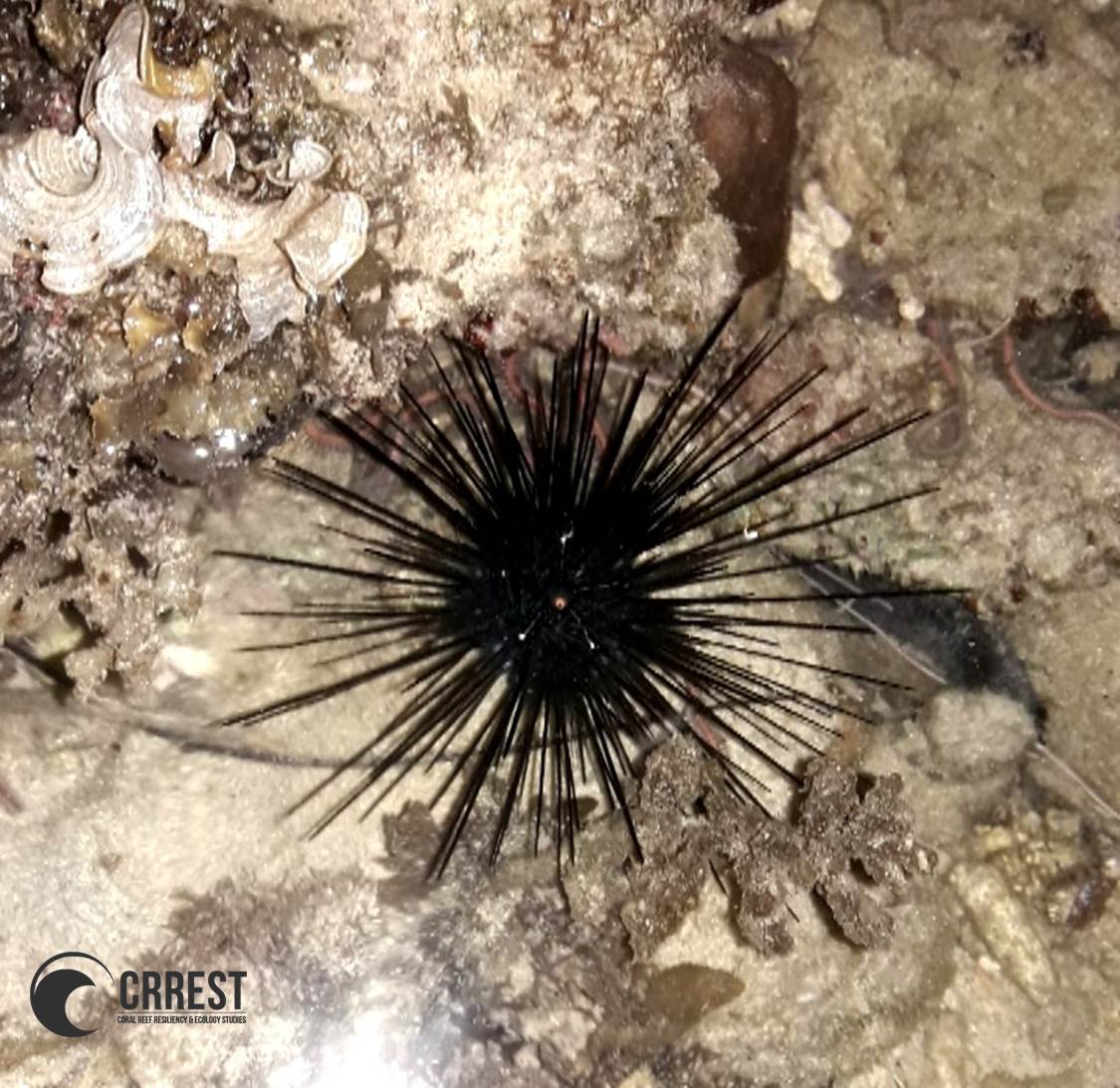(Long-spined sea urchin)
Diadema setosum is a species of long-spined sea urchin belonging to the family Diadematidae. It is a typical sea urchin, with extremely long, hollow spines that are mildly venomous. D. setosum differs from other Diadema with five, characteristic white dots that can be found on its body. The species can be found throughout the Indo-Pacific region, from Australia and Africa to Japan and the Red Sea. Despite being capable of causing painful stings when stepped upon, the urchin is only slightly venomous and does not pose a serious threat to humans.
Cite this page as: Fortaleza, M. A., Lanutan, J. J., Consuegra, J. M., & Nañola, C. L. (2020). Diversity of echinoderms in intertidal and shallow-water areas of Samal Island, Philippines. Philippine Journal of Science, 150, 281-297.
Cite this page as: Fortaleza, M. A., Lanutan, J. J., Consuegra, J. M., & Nañola, C. L. (2020). Diversity of echinoderms in intertidal and shallow-water areas of Samal Island, Philippines. Philippine Journal of Science, 150, 281-297.
DNA Sequence »
Please contact: Maybelle Fortaleza (University of the Philippines Mindanao) via email: "mafortaleza@up.edu.ph"


